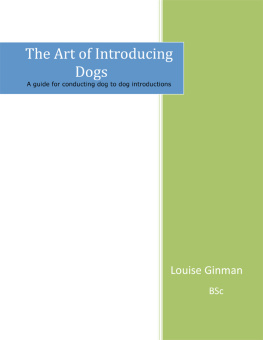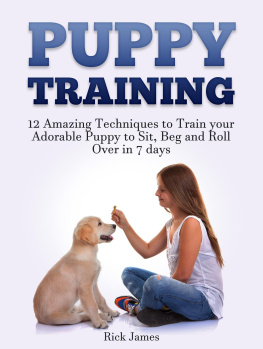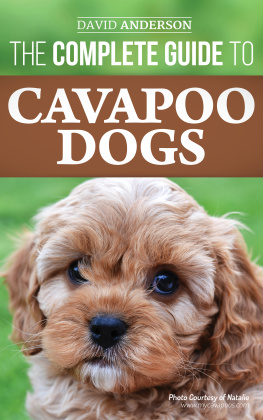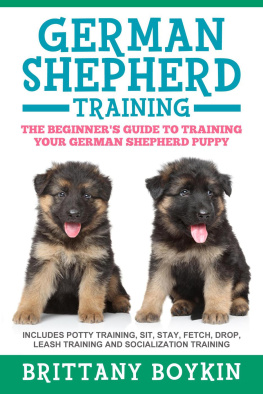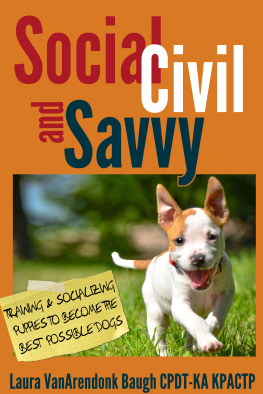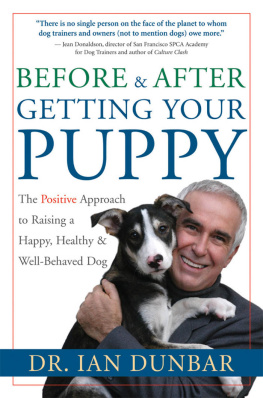The Art
Of Introducing Dogs
The Art
Of Introducing Dogs
A guide for conducting dog to dog introductions
Louise Ginman, BSc
Copyright and publishing information
Disclaimer This book is for information and educational purposes only. Before implementing any training or introduction program, the assistance of a qualified and competent professional dog trainer or veterinary behaviourist should be sought. The author and Publisher shall have neither liability nor responsibility to any person or entity with respect to any loss or damage caused or alleged to be caused directly or indirectly by the information contained in this book.
For Mekari and Finley
The love and light of my life
Table of Contents
This book began as a simple article on the subject of introducing dogs to each other. The original request for an article came about through the Rescue Branch of the Siberian Husky Club of NSW. The article would help owners and foster carers to integrate a new dog into their doggie family. When I began writing the article, the more I wrote, the more I realised I needed to write to explain all of those things that we, as dog trainers or professionals subconsciously or consciously seek out about the dogs in order to first decide if a dog to dog introduction is feasible and also how best to conduct the introduction, based on each dogs previous history. The article soon exceeded normal article length and as Karin Bridge so nicely pointed out to me no one is going to publish an article of this size unless you do some very serious editing. So the idea of a book began.
I have been blessed in my life that I have worked with both domestic and non-domestic canids. I began my animal career as a veterinary nurse, kennel hand and dog/cat groomer. Back then, my knowledge about behaviour and training was in development. I had so much to learn but was well on my way by the time I moved to Taronga Zoo in 1994. I thought I knew a lot about domestic dogs by then but moving to the Zoo, a whole new world of canids opened my eyes to how little I really did know. I still had another 34 species to learn about, let alone all the other carnivores large and small that I was now working with. This year, marks my 19th year at Taronga Zoo in Sydney Australia. I love my job and the team of people I work with both directly and indirectly. Some of the most amazing people work at Taronga and I have learnt so much from them.
With my overwhelming drive for knowledge, I began visiting University libraries on my days off work to look up scientific papers that would increase my knowledge of the species I was now caring for. Eventually I would go to University to get my Bachelor of Science degree which I did over 6 years while working fulltime. In my first few years as a keeper, I had embarked on some exciting projects with wild dogs and Snow Leopard breeding. I was involved in the breeding of Sumatran Tigers, Meerkats, Fennec Fox, Red Pandas and Otters. I was also put in charge of hand rearing 2lion cubs and am privileged to still be caring for the male Lion that I reared, a very handsome fellow he is. Later in my career, the list of species and individuals that have successfully bred and reared their young in my care has grown. The carnivore unit at Taronga Zoo has high level animal husbandry and management skills built on a strong foundation of knowledge.
When working with animals in a zoo environment, keepers rarely get to choose what animals will be paired for breeding. The choosing is done by species co-ordinators and curators. Breeding animals may come from another Zoo in Australia or overseas. Either way, we often only learn about the animals previous history once they have arrived. The whole process of moving animals between Zoos is a lengthy one, taking many months and sometimes years before permits or the required paperwork have been obtained, quarantine requirements met and transport arrangements made. Then, once the animal arrives, it may takes days, weeks or months to settle that individual into their new environment. Once all that is done, its then time to introduce them to their new mate or family.
Solitary species like cats are generally only ever introduced to a cat of opposite sex. With social species, the animal/s to be introduced may be paired with a single individual or a single sex group e.g., two male Meerkats may find themselves being introduced to a group of females or vice versa. One of the most vital ingredients of a successful introduction is ensuring that you have good knowledge of the social structure of the species in the wild, using that as your template. It is when you go against nature that you can run into trouble. Try putting a male Meerkat or Small Clawed Otter into a family group that already contains males and you can almost guarantee severe fighting and a potential death. Otters and Meerkats do not exist this way in the wild.
In all my years as a keeper and supervisor of carnivores, I have heard of many unsuccessful introductions around the world that either resulted in failed breeding due to aggression or the death of one of the animals. This is a tragedy and one that can certainly happen even with the greatest of knowledge and skill, but more often it occurs when the species natural social structure was ignored, behaviours were missed, an animals history was not known, the animals were not yet comfortable in their environment or an introduction was rushed.
My procedure and policy for doing successful animal introductions with exotic species is to have intimate knowledge of the species natural history which becomes my foundation to build on. I look carefully into each animals own history how many siblings, what sex were the siblings, did they live with both parents, what age were they removed. In dog terms all this adds up to what is their socialisation history as that factor alone can seriously affect any introduction or breeding attempt no matter how skilled you are.
If their socialisation history is lacking, all is not lost. It just may mean that the animal in question may not ever enjoy living or interacting with another animal but still be capable of breeding. They may only be able to be paired for mating but then live separately again. Solitary species are at higher risk of poor socialisation in Zoos. As a young keeper, I saw one year old big cats removed from their mother so that she could breed again. At one year of age, these cats are not ready to live a solitary life. The longer they spend alone at this early stage in their life, the harder it will be to introduce them to a breeding partner later. This was particularly true for hand reared cats. One tiger that I knew was hand reared by keepers and as a result of lack of socialisation with her own species, failed to ever be able to be introduced safely to another tiger. She just didnt have the range of tiger social behaviours to make other tigers feel at ease and every attempt to pair her with a male ended up with the male attacking her.
Very early on, my policy was to leave cubs or young of any species with their mother or parents (where possible) for at least one or two years past normal age of dispersal with the goal of only transferring the young to another Zoo once it had a mate waiting for it. If this was not possibleas timing of animal transfers can be difficult for various reasonsthen with good solid early socialisation, past the usual age of dispersal, the animal had a good foundation that would carry it through even if there was 6 month lag in meeting another of its own species.

